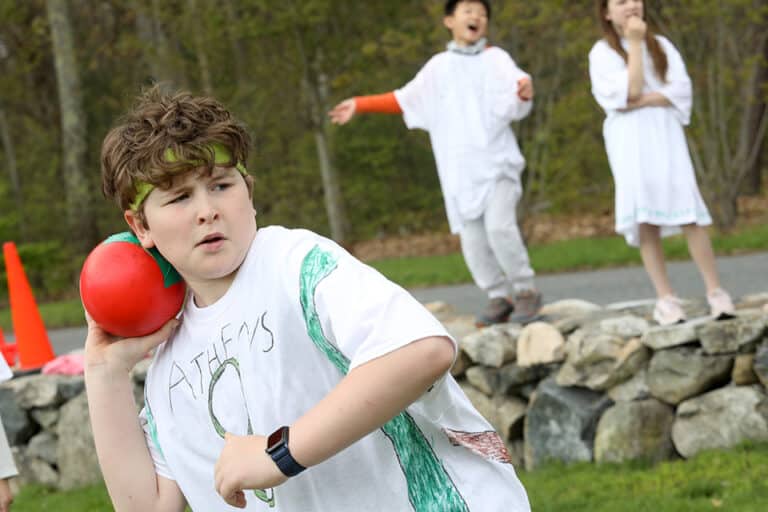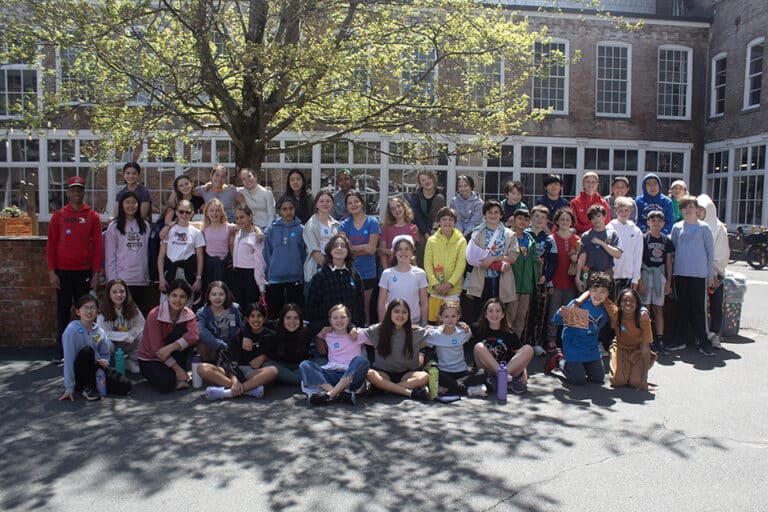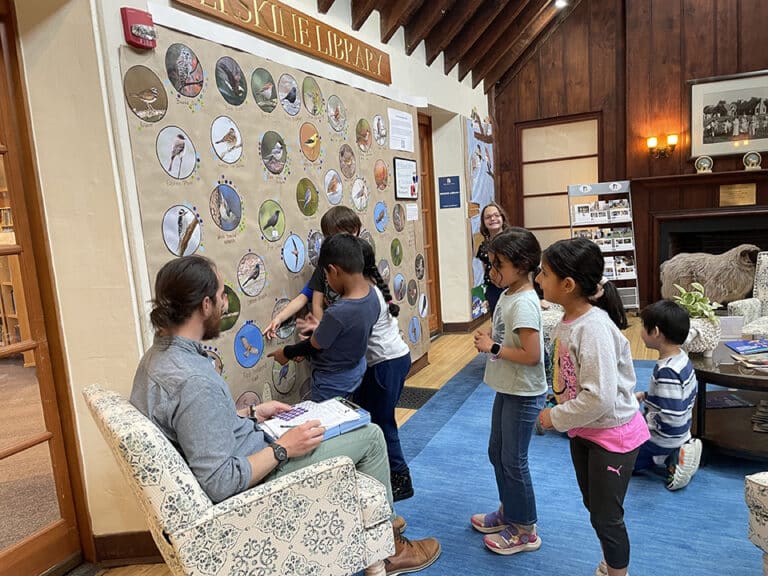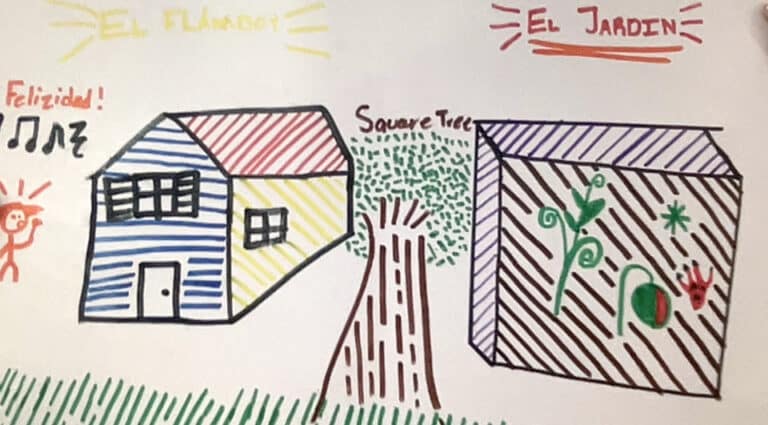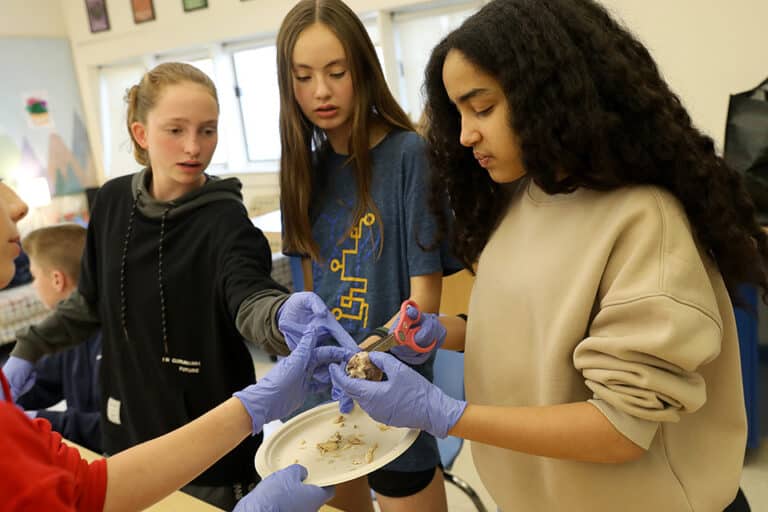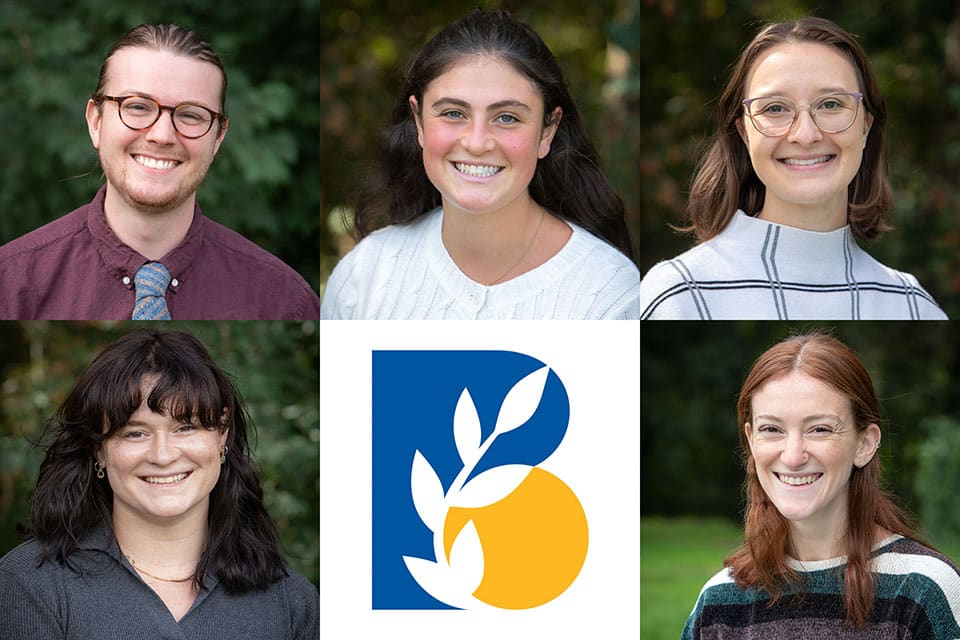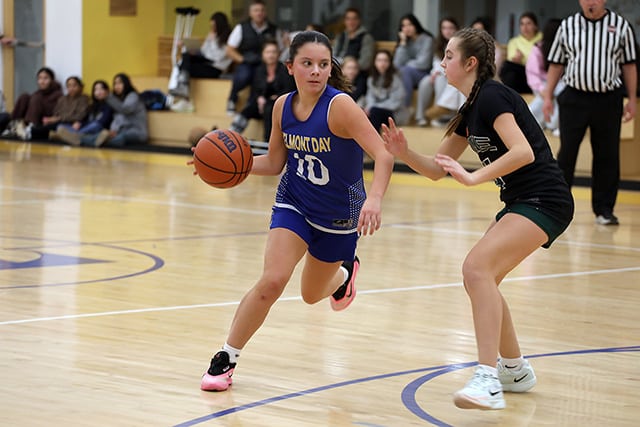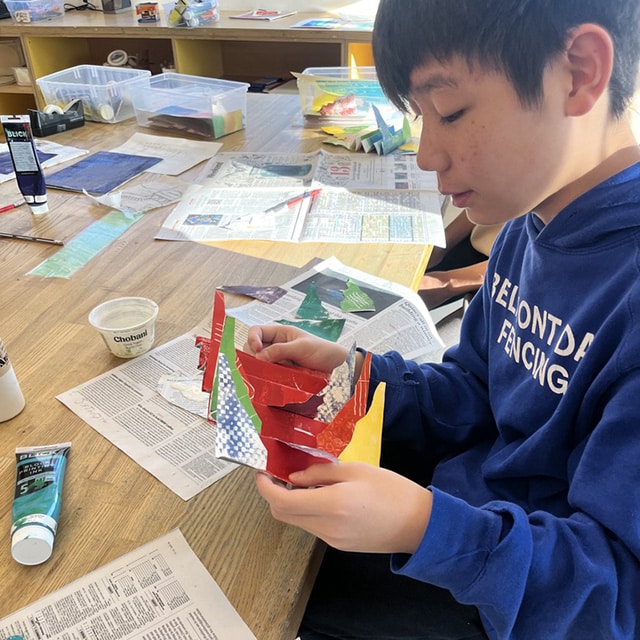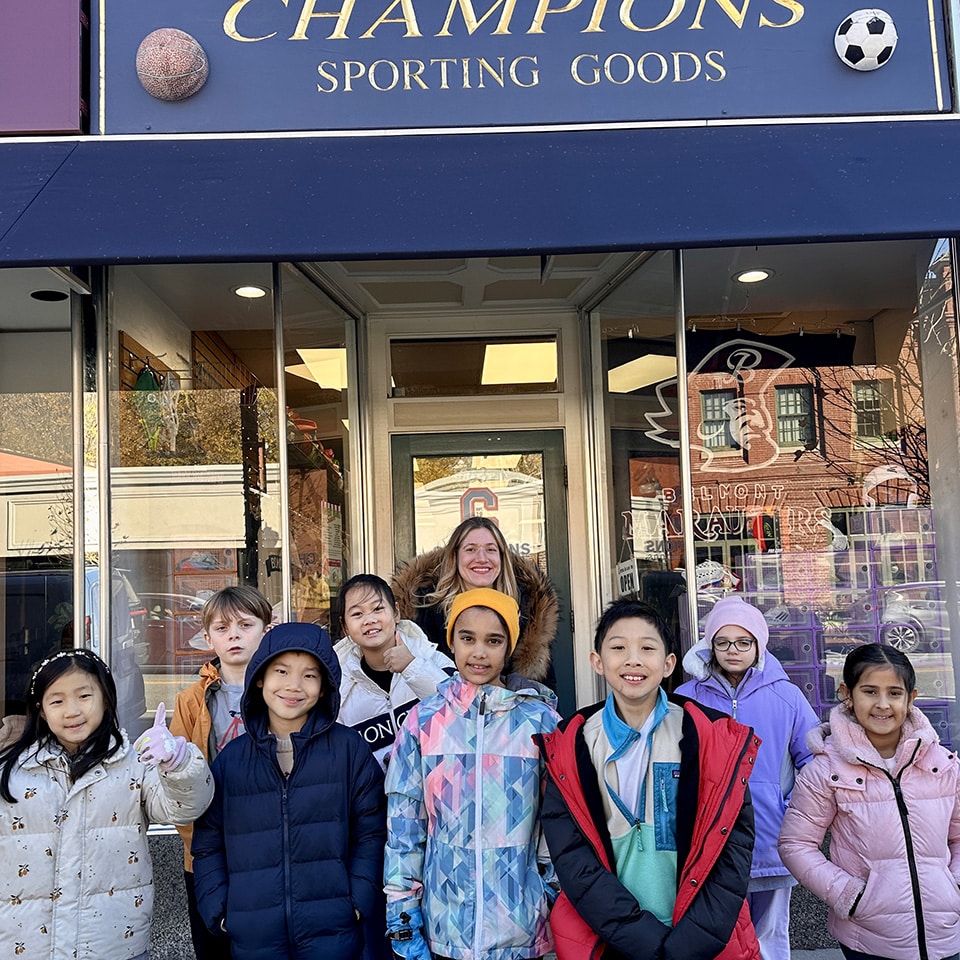PE Update: Fourth Grade Olympians Shine In Competition
In fourth grade, the study of Ancient Greece made its way out of the classroom and into their physical education classes! The young Olympians learned all about the spirit of the Olympic games and competed this week as members of an Ancient Greek city-state (Megara, Sparta, Corinth, Argos, and Athens). These student-athletes are not only learning about the ways of the world from way back when, but seizing the opportunity to display cooperation, competition, teamwork, and sportsmanship throughout the day. The students trained for a full slate of events (3-stade race, standing long jump, shot put, javelin, discus, relay race, meta boxing, and chariot race) that tested each competitor mentally and physically. However, the real victory was seeing each Olympian celebrate all efforts on the day! Hooray to all competitors!
– Abbey Nyland, physical education teacher
Arts Update: Sixth Grade Travels to MASS MoCA
Last Friday, the sixth graders traveled to the Massachusetts Museum of Contemporary Art (MASS MoCA) with the entire arts team to spend the day immersed in wide-ranging arts installations and exhibits at the sprawling museum grounds in North Adams. For the second year in a row, the arts team applied for and received a grant from the Lenesa Leana Endowment for Innovative and Collaborative Education to fund the experience. Students explored the museum in small groups, and had cameras to document their discoveries as they searched for highlighted exhibitions and completed a scavenger hunt. A few installations stood out among the many favorites, including: James Turrell’s installation Perfectly Clear, Taryn Simon’s outdoor exhibit The Pipes, and Gunnar Schonbeck’s No Experience Required. One group was lucky enough to meet artist kelli rae adams at the museum and talk with her about her installation Forever in Your Debt – an unexpected treat!
– Anne Armstrong, visual arts teacher and arts coordinator
BDS Spring Birding Project Draws to a Close
We’re in our final week of bird data collection (don’t worry, the display in the Gallery will remain up for an additional week) with birders from the first and sixth grades catching us up on the latest findings. Seeing many more species pop up in the data sets from the past couple of weeks has been such a delight. We’ve run out of room for all the birds on our display! A big shout-out to second grader Riahn Choi, who independently tracked the Belmont Day birding data over the April break to ensure our community science data visualization was included for that week. Thank you, Riahn! After this project, the Haikubox will continue generating data throughout the year, and we’re hoping to be able to compare migratory patterns from year to year in the future. If you want to keep abreast of the BDS bird data, click here to follow our Haikubox and look for new species when you’re on campus!
As we conclude our bird data tracking, please take a few moments tomorrow to notice the birds around you during Global Big Day and World Migratory Bird Day on Saturday, May 11. Even 10 minutes of birding outside your home will count toward this massive global birding effort! You can even watch the data populate in real-time here.
Thanks for birding with us!
– The Innovation Team: Brit Conroy, Annie Fuerst, and Amy Sprung
First Graders Learn to Make Scientific Observations
This week, first grade scientists learned how to make observations, using four of their five senses, hearing, sight, smell, and touch. On their first scientific excursion to the playground, students noted they could feel the warm breeze, smell wood chips and flowers, see the trees, and hear the birds singing. They then used sketches to help other scientists know where they took their observations. Building on their unit on weather, students described the color of the clouds they saw, sketching the small amount of clouds in the sky on a sunny day. Keep a lookout for these scientists as they continue investigating their surroundings at BDS.
– Katie Hogan, first grade teacher
Sixth Grade Students Explore Puerto Rican Spanish
Sixth grade Spanish students are learning about Puerto Rico while learning vocabulary related to housing. They engaged with authentic materials throughout the unit, described a house from an online real estate advertisement, learned characteristics of Puerto Rican Spanish, and engaged in a project where the students applied reading, listening, writing, and oral skills. First, students read the transcript of a podcast called Casitas in the Bronx, which is named after a native tree from Puerto Rico and also the name of a community garden in the Bronx. They listened to the podcast as a group, identifying new vocabulary before moving to independent work. They then drew a picture representing the story, using the vocabulary they knew, and then presented it to the class without notes. After students described their picture to the group, they recorded their descriptions on their computers. Click here for a Canva presentation of their final work.
– Ana Maria Restrepo, Spanish teacher
Seventh Grade Look Into How The Eye Works
Over the past weeks in science, we started by studying light waves and have now transitioned into the structure and function of our eyes. In our study of light, we explored how light waves behave across the electromagnetic spectrum, but how do light waves and our eyes connect? Light waves reflect off objects that you are looking at, and when the light hits the retina, it turns into an electrical signal that travels through the optic nerve to the brain. The brain then turns the signal into the images that we see. To conclude our exploration of eyes and how we see things, we dissected eyes from either a cow or a sheep this week in science. During the dissection, we examined the exterior structure of the eye and did our best to locate the optic nerve. We also cut the eye open to reveal internal structures such as the lens, retina, and vitreous humor. During the dissection, we got a first-hand look at the internal structure of the eye, which helped us all to learn how the eye works. It also gave us an appreciation of how complex the eye truly is. While some students found dissecting an eye a little gross initially, all agreed that this learning process was valuable and cool.
– Maggie Small, seventh grade science teacher
